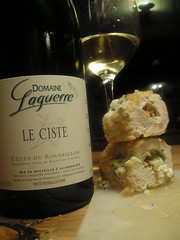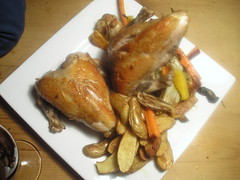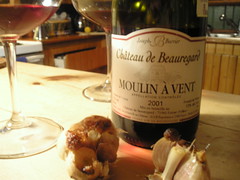 Why Biodynamics is important
Why Biodynamics is importantYes, it’s no longer Wednesday, so please forgive my tardiness. As a long standing supporter of bio-dynamics, at times I have had to dig in my heels against a
tornado of criticism from the more erudite contingent of the blogosphere. But they have reason, and perhaps even an obligation to doubt, and to question. I agree that the idea of using bladder fermented herbs in homeopathic doses as way of ‘energizing’ your compost is weird. You should also know that there is often a ceremony attached to the burying of the cow horn, the vessel of the fermented herb concoction.
What the doubters are looking for is scientific evidence that these bio-d interventions have some sort of effect, wether it be positive or negative. But that basin of knowledge is still relatively small. From what I have read, there seems to be a consensus that the use of bio-dynamics tends to result in slightly reduced yields, but a healthier and better root development which is probably a result from a
greater microbial bio-mass, ie healthier soil. After that, not much. From my perspective, until the long term impact of bio-dynamics versus conventional and organic interventions has been studied, we should take an innocent until proven guilty approach. But that is not really the point.
The real importance of bio-dynamics lies in an important paradigm shift, from humans being the masters of the natural world to that of participants. Biodynamic agriculture is not simply about consuming the resources of the earth, but about healing and protecting the very life forces that sustain the Earth. In light of much of the scientific evidence that points to us as being the culprits in climactic shifts, dead or sick water systems, putrid air which sickens us as we breathe, this shift is essential if we are to make the necessary changes to confront these problems. The question is who here are the real fools?
But what of the wines? Many of the very best and unique wines that I have tasted are in fact a product of bio-dynamic farming. The sceptic will say that it is the extra attention paid to the vine that makes makes for better quality fruit, or perhaps it is the reduced yields. Or, that the wines were great even before the switch to bio-d. That might be the case, but they are great wines nonetheless. So, if the result of switching to bio-dynamics means great wines and a healthier environment, I am more than willing to support these winemakers efforts by buying their wines, and telling others to do so as well. Take a look at
Jack's roundup for some other bio-d faves from the blogging world.
A Couple of Bio-d faves from 2006Clos de la Coulee de Serrant 1998, JolyAn eight year old Chenin that required another 3 days in caraffe to show itself, but very much worth the wait. Such incredible length, almost defines minerality with notes of honey and apples
Bordeaux Côtes de Francs 1970, Château le PuyTo buy a the most recent vinatge costs $25! The is how Bordeaux should be drunk. A generous bouquet that combined herbs, tobacco with a hint of leather was followed by a profound fruitiness that evoked the same bright plum and tart cherry of younger vintages but in a richer and more elegant framework.
Vin de Pays de L’Hérault 2000, Mas JullienComposed of a veritable salad of indigenous grapes including Grenache Blanc, Viogner, Chenin, Terret Bourret and possibly even some Gros Manseng, this is big wine with a lot of stuff going on. Apparently his buddy Didier Dagneau of Pur Sang Pouilly fame helps Jullien with the vinification. It had a beautiful floral nose with browning apples, peach and vanilla accents. It reminded me of spring. What followed was one of the creamiest and most complex whites that I have tasted in a while. Terret brings the apples, Grenache a hint of oxidized nuttiness, Viogner that allusion to sweet honeysuckle on the finish. The whole package was framed by a wonderful freshness that apparently comes from the Manseng.
Muscat 2004, Franholz, Ostertag
A very dry, and very unique twist on Alsace Muscat. For a grape whose greatest weakness if often its excessive, sweet perfume, this interpretation combines a restrained bouquet with a complex and rich mouthfeel. Ostertag says that Franholz is his ‘enfant terrible,’ … If all women smelled like this I would be in trouble.
 ! I added some roasted garlic and sun dried tomatoes to the goat cheese stuffing and a good mixed selection of wild mushrooms to the sauce. This type of meal requires a white that on one hand is rich enough for the meat and the cream in the sauce, yet has enough acidity to handle what the naturally acidic goat cheese and sundried tomato bring to the table.
! I added some roasted garlic and sun dried tomatoes to the goat cheese stuffing and a good mixed selection of wild mushrooms to the sauce. This type of meal requires a white that on one hand is rich enough for the meat and the cream in the sauce, yet has enough acidity to handle what the naturally acidic goat cheese and sundried tomato bring to the table.



